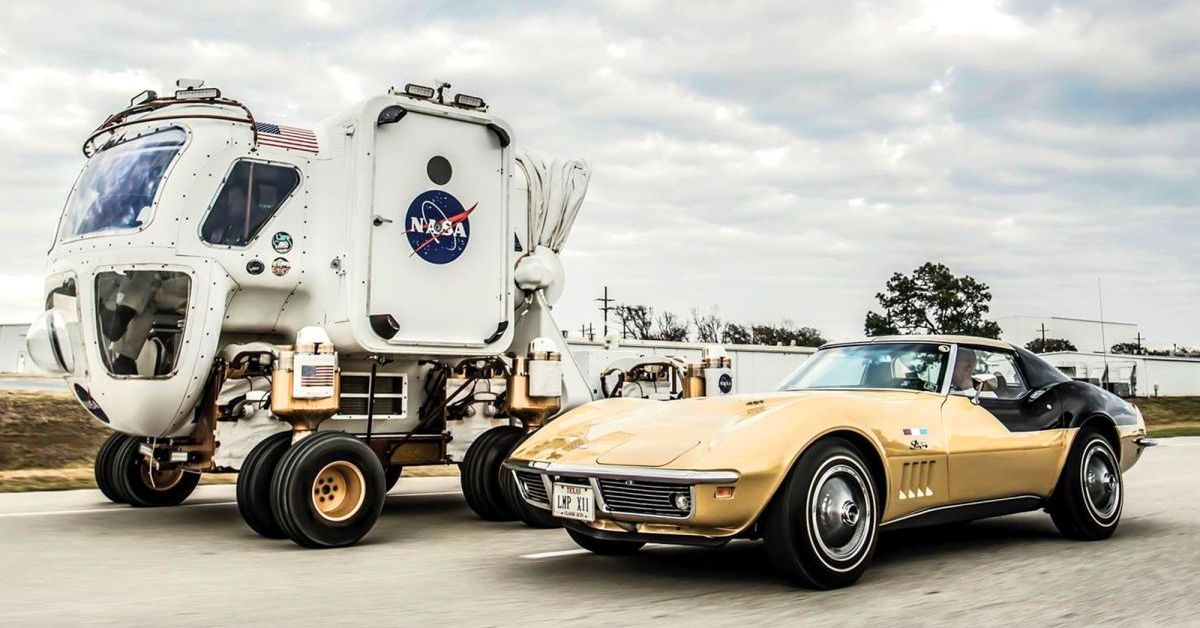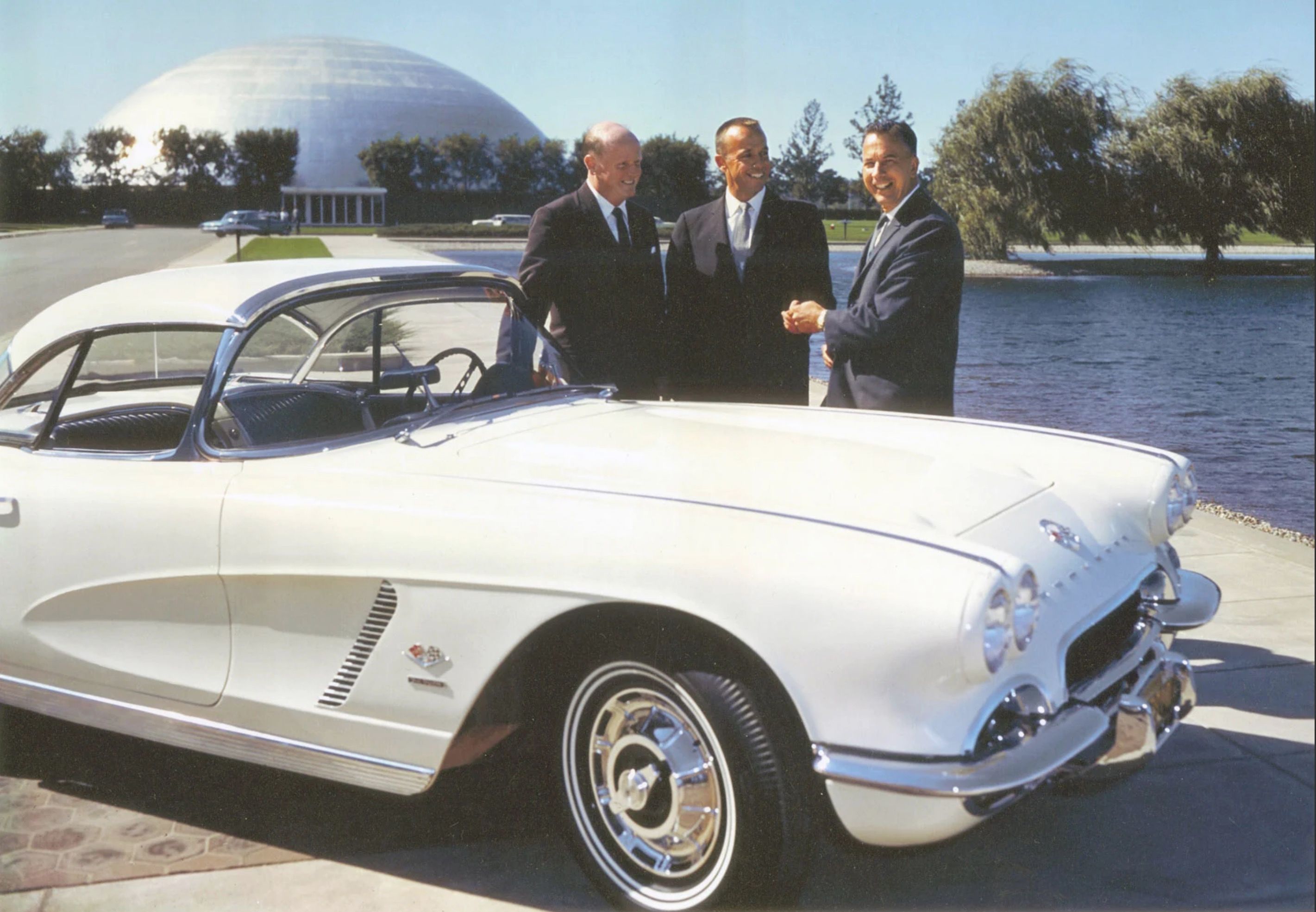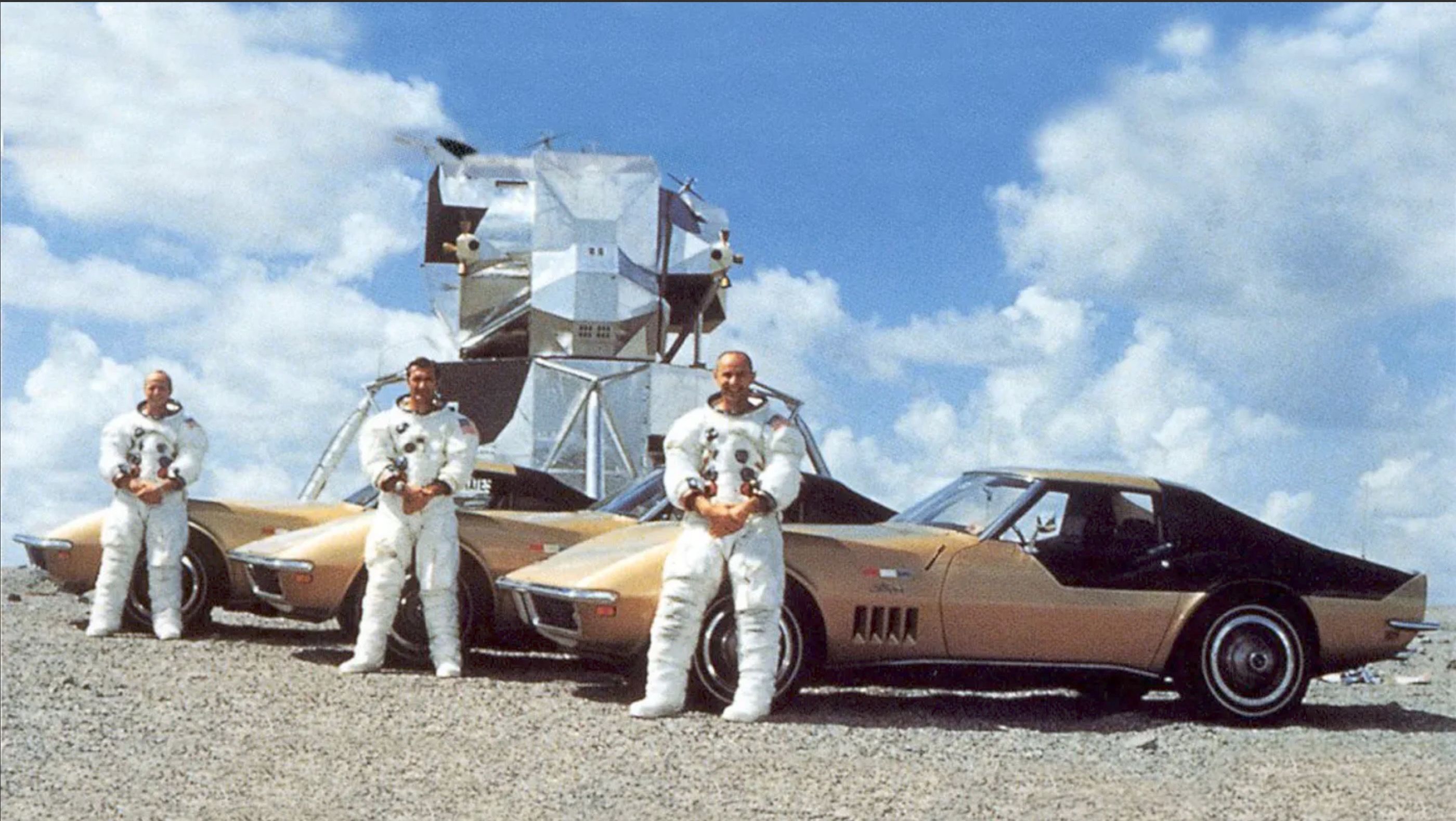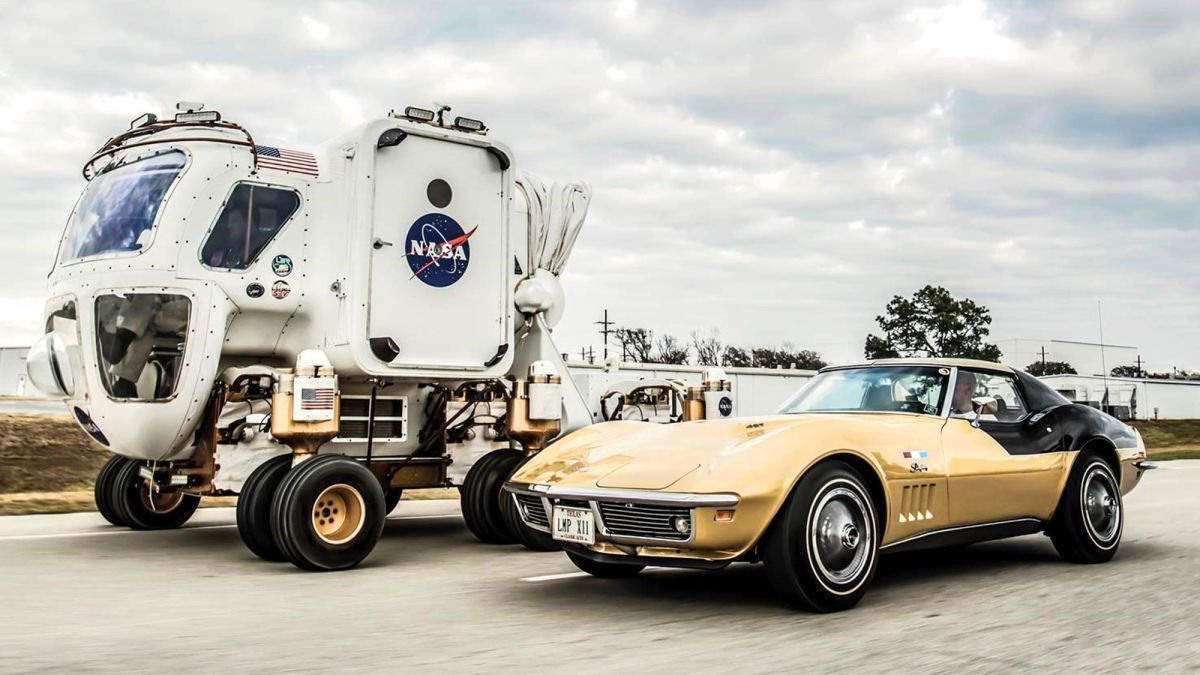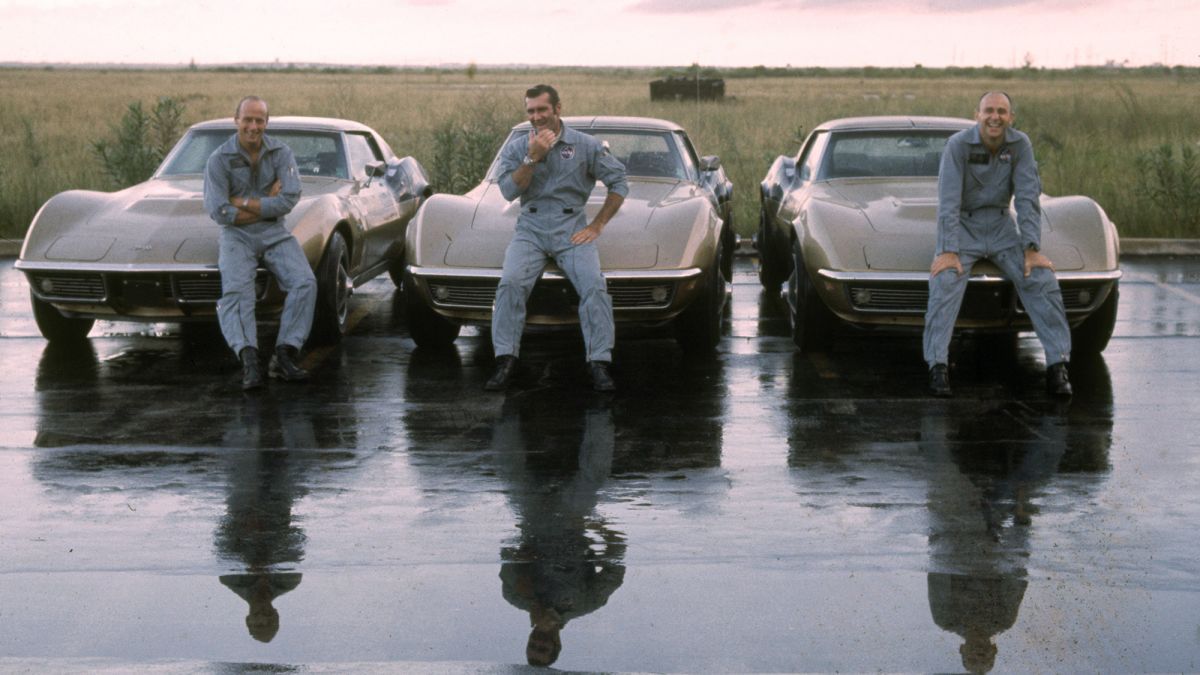Since 1961, astronauts have cultivated a remarkable relationship with Chevy Corvettes. The astronauts’ passion for speed, performance, and power translated well to their choice of vehicles. Alan Shepard was the first astronaut to be rocketed to space; The first vehicle he drove upon landing was a ’57 Corvette. When the original Apollo mission embarked on its historic mission to the moon just over 50 years ago, the astronauts obtained matching 1969 Stingrays designed by Alan Bean.
GM has also been involved in the space program by engineering designs such as the mobility system used on the Apollo 15 Lunar Rover Vehicle. The astronauts involved in pioneering space missions are remembered and honored, and although hard to find, so are their treasured Corvettes. This augmented the legacy of the classic car and has made it even more significant in American history.
Let’s discover more about the legendary union of NASA astronauts and Chevy Corvettes and the intriguing history behind it.
The First Flight
Alan Shepard Jr. was the first American in space, an astronaut of the Project Mercury Seven program. His choice of vehicle when attending Space Program training was a 1957 Chevy Corvette. After returning from his Mercury mission, he was gifted a Corvette by the President of General Motors Ed Cole in 1962.
A collaboration between Florida Corvette dealer (and Indy 500 winner) Jim Rathmann and Ed Cole would provide Corvettes on a special lease program to Apollo astronauts. They would be able to lease the classic cars for just $1 per year, conveniently bypassing the “no gift” policy at NASA.
When Jim Rathmann created the special lease program for astronauts, Shepard obtained a 1968 ‘Vette with a 427ci V8 that made 435 horsepower and included a tri-power carburetor. The engine was a L71 big block fitted with aluminum heads. The exterior was painted in “Polar White” with a striking black interior.
These were the origins of the love story between astronauts and Corvettes. John T.R. Dillon, a Safety Engineer at Kennedy Space Center, explained how “All of the astronauts were test pilots back then; they flew performance aircraft and they moved into performance cars with a well-honed appreciation for acceleration and so forth”.
The Custom 427 Stingray
Three matching Corvettes belonging to the Apollo 12 trio Charles Conrad, Dick Gordon and Alan Bean were 1969 427 Stingrays with a 454ci engine that made 390hp and 500ft-lb of torque. Alan Bean designed the color scheme for the ‘Vettes, pairing a striking gold (“Riverside Gold”) with black stripes. These cars would also have a custom badge with the colors of the American flag.
And of course, with all that power comes adrenaline-rich driveability. Consequently, there are many stories of astronauts racing each other down the streets of Cape Canaveral in their slick AstroVettes. Alan Shepard had his first Corvette for just under a year, but required a new motor in that time. Some suggest this is due to his propensity for speed. Jim Rathmann described Shepard as “a racer…he was always wanting to be the fastest guy”.
Each Corvette had color-coded badges that reflected each astronaut’s position when they were in space: “LMP” represented lunar module pilot, “CMP” was the command module pilot, and “CDR” stood for commander. These were coordinated with the same color codes they used to differentiate their personal items on the Apollo 12 mission craft.
The AstroVette History
Corvette enthusiast Danny Reed lucked out when he bid on a 1969 model he recognized to be one of the cars from the magazine cover that featured Conrad, Gordon and Bean. The Apollo 12 astronaut’s car would be awarded to Reed after his bid competition did not pay up; He won by a margin of just $30. This Corvette became the first to be garnered with a National Historic Vehicle Register record.
The 1969 Chevy had a 426.9ci V8 with a Rochester carburetor and a 4-speed manual transmission. It was capable of 390 horsepower and 460 lb-ft of torque.
On the 48th anniversary of Apollo 11’s successful landing, Danny bought a 1971 Corvette that would turn out to be that of the Command Module Pilot Alfred Worden. This Apollo 15 Corvette along with his ’69 model are now lovingly preserved at the National Corvette Museum, serving as an iconic legacy in the exhibit From Gas Station to Space Station.
Interstellar Legends
The love story between astronauts and Corvettes is both legendary and patriotic. In 2011, a commemorative event in Cocoa Beach involved 30 astronauts driving Corvettes to honor Shepard’s original flight. The type of Corvette driven was tailored to each astronauts’ respective generation of active duty.
The unique connection between the space program and the cars has persisted, with the 2020 Corvette Stingray C8 having a commemorative reveal at the Kennedy Space Center, an array of astronauts in attendance. “Let’s launch this road rocket!” said astronaut Bruce Melnick at the release. The remarkable story behind astronauts attuned for performance engineering and their love for Chevy cars is still memorialized today.
Sources: Chevrolet, Corvette Museum, DriveTribe, MotorTrend

